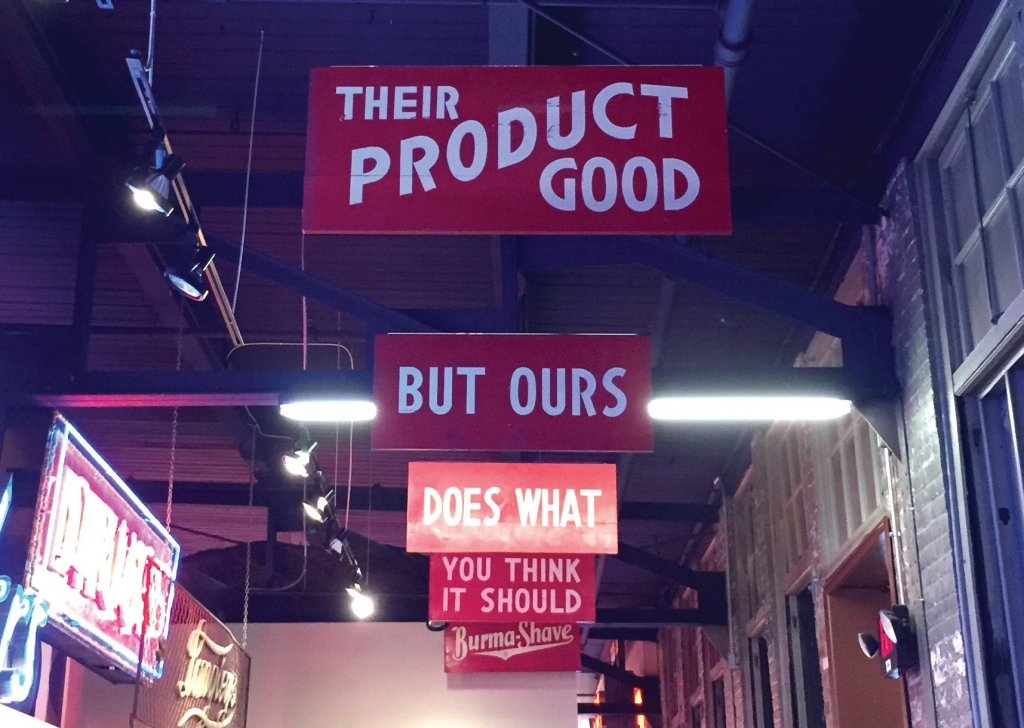This month, I’m highlighting two new museum acquisitions. You’re probably wondering if all newly received items are placed on display. Quite honestly, no; only a select few actually rotate into our existing displays. The majority are catalogued and stored for our future expansion. Only about 19,800 sq. ft. of our nearly 40,000-sq.-ft. building has been remodeled. It’s all about time and money.
Two relatively recent additions, however, found their respective places in the museum and were installed in April. The first addition was a complete set of vintage Burma-Shave signs, which the museum purchased last fall. You often see single signs at flea markets, antique shows or yard sales. But, more often than not, they’re reproductions. Many signpainters can paint and distress a set of Burma-Shave signs that would nearly fool even the experts. Our set, as best as we can tell, is authentic, and even carries the union “bug” on the final “Burm Shave” signs of the six-panel series.
Those who have visited the museum know that we already had two Burma-Shave signs, but these were early prototypes, which were 2 x 8-ft. boards with black copy on a white background, were found in the former St. Paul, MN home of Clinton Odell, Burma-Shave’s founder. It seems that John Sweet, a member of the Sweet family that owns FMS Corp., purchased the Odell house in 1999. When he ventured into the attic, Odell discovered Burma-Shave signs nailed across the floor joists as floorboards. He donated these to the museum in 2007; quite a find.
We’ve installed the complete set of Burma-Shave signs near the entrance to the museum’s main exhibit area. Visitors looking at the two vertically mounted prototypes can look back and see the series of six Burma-Shave signs during a guided tour.
Our second new piece, a 6 x 14-ft. sign displaying the Miller High Life logo, was screenprinted on a tin, exterior-grade board, circa 1970. The board was originally located on an Oshkosh, WI farm, but blew down in a windstorm. Charlie Jones, then 17 years old, saved it. Jones and his family visited
the museum in late 2015. When the family farm was sold, Jones, who’s now a professor of geology and environmental services at the Univ. of Pittsburgh, remembered that the board was stored in the barn’s hayloft. He notified us about its availability, and his father, Norris W. Jones, donated it.
I drove to Oshkosh and picked it up in late February; the installation for both the outdoor board and Burma-Shave signs was engineered by our expert exhibit builder, Sean Druley.


 Tip Sheet3 days ago
Tip Sheet3 days ago
 Business Management1 week ago
Business Management1 week ago
 Women in Signs2 weeks ago
Women in Signs2 weeks ago
 Real Deal4 days ago
Real Deal4 days ago
 Editor's Note1 week ago
Editor's Note1 week ago
 Line Time2 weeks ago
Line Time2 weeks ago
 Product Buying + Technology1 week ago
Product Buying + Technology1 week ago
 Benchmarks10 hours ago
Benchmarks10 hours ago
















